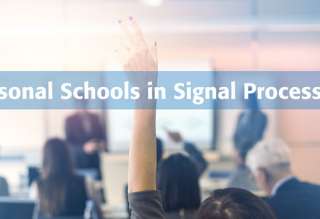Expansion of MGA Online Petition Forms for New Geographic Units
IEEE MGA is excited to announce the expansion of our online petition form to include submissions for Sections, Subsections and Status Changes! Online…
Read moreSeasonal Schools in Signal Processing: Summer 2019 proposals being accepted now!
Check back on the SPS website to keep up-to-date on upcoming Seasonal Schools! Are you looking to energize signal processing students, early stage…
Read moreMeet the Candidates: 2019 IEEE Division IX Director-Elect
The IEEE annual election began on 15 August and ends on 1 October at 1 p.m. EDT USA/17:00 UTC. The IEEE Signal…
Read moreIEEE IVMSP TC Activity Update
Image, Video, and Multidimensional Signal Processing Technical Committee (IVMSP TC) promotes and guides the advancement of the field of image,…
Read moreUpcoming Distinguished Lectures
Please visit the Conferences and Events page on the IEEE Signal Processing Society website for Upcoming Lectures by Distinguished Lecturers.
Read moreState of the Art and Future Directions on DSP and Circuit Architectures for MIMO
Massive MIMO is a compelling wireless access concept that relies on the use of an excess number of base-station antennas, relative to the number of…
Read moreWhat Should We Learn? Rethinking PCA for Modern Data Sets
In today’s big and messy data age, there is a lot of data generated everywhere around us. Examples include texts, tweets, network traffic, changing…
Read moreWhat Should We Learn? Reinventing the wing With electric propulsion……
Five years ago, engineers at NASA started to think about using a large number of electric motors to create a blown wing, later naming the project…
Read moreWhat Should We Learn? Making Medical AI Trustworthy
The health care industry may seem the ideal place to deploy artificial intelligence systems. Each medical test, doctor’s visit, and procedure is…
Read moreCall for Nominations: New IEEE IVMSP TC Members
On behalf of the IEEE IVMSP-TC Nominations Subcommittee, we would like to call for nomination of new TC members to serve a 3-year term from January 1…
Read more










